Motorola Droid Bionic Review - Dual Core with 4G LTE
by Brian Klug on October 11, 2011 1:55 AM EST- Posted in
- Smartphones
- LTE
- Motorola
- OMAP 4
- Mobile
- motorola droid bionic
WiFi, GPS, Audio
The Motorola Droid Bionic, like the Droid 3, uses a TI WL1285 wireless combo for WLAN, Bluetooth, and an FM radio, were the Bionic to have an application for it. WiFi range on the Bionic is totally adequate, I can find nothing to fault with this, and we’ve pointed out where the WLAN antenna is on the device. Things are pretty standard here, the Bionic does a good job hopping on and off of my 2.4 GHz 802.11n network, and with my 20 MHz channels I see a link speed of 65 Mbps, which indicates long guard intervals.
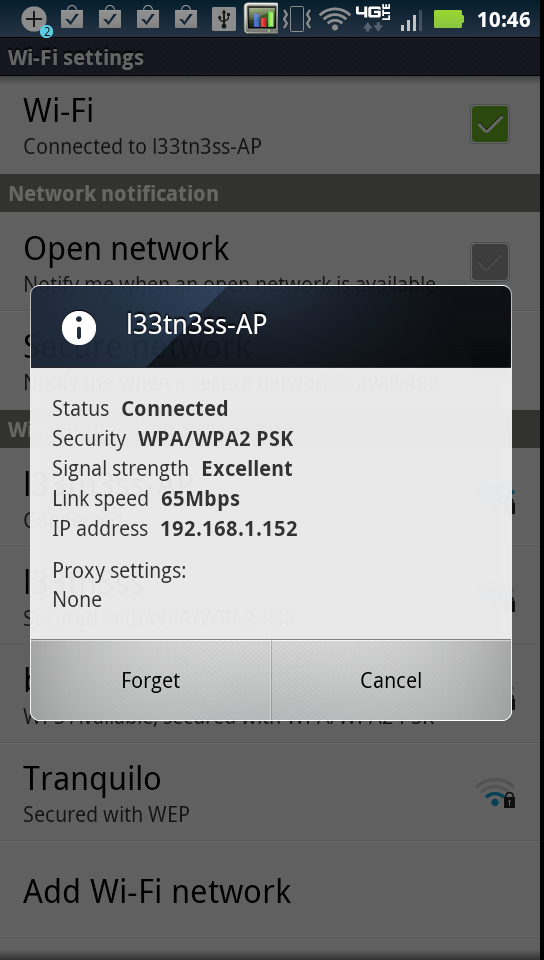
I did the usual thing and ran our local WLAN test which consists of downloading a locally-stored 100+ MB PDF and measuring throughput.
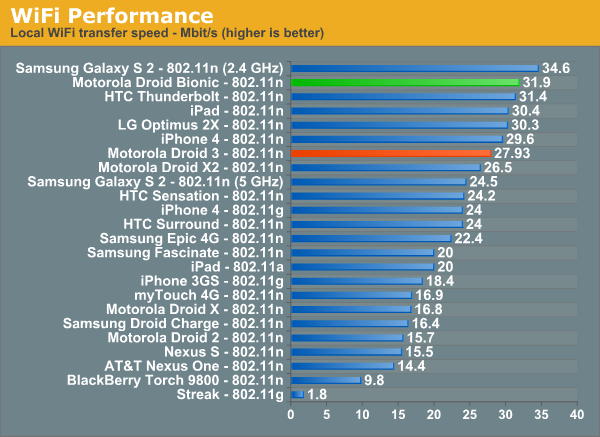
Performance here is on par with and slightly better than the Droid 3.
WiFi Hotspot
The Bionic also includes the requisite WiFi hotspot functionality you’d expect from a top tier smartphone. There are a maximum of five allowed wireless clients that can attach at a time. The software configuration thankfully also allows users to choose what wireless channel the hotspot sits on, and the DHCP server pool’s starting address. You can use WPA2 PSK or no encryption at all.
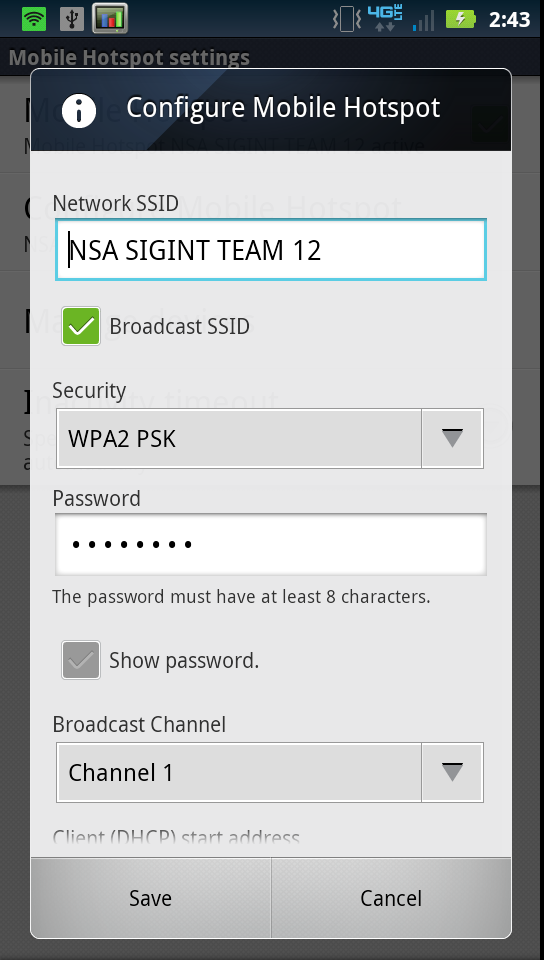
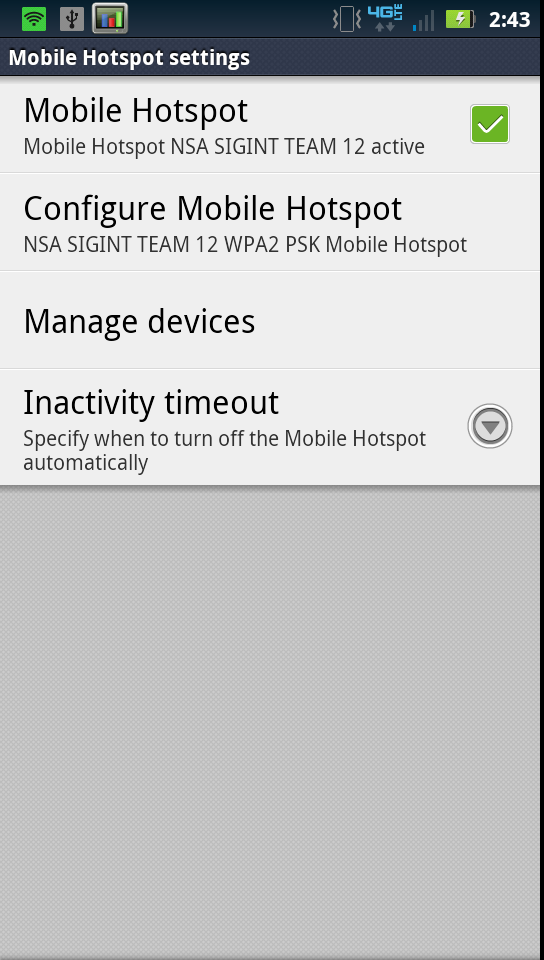
Clients attach and negotiate an 802.11g 54 Mbps link rate at maximum. I did have some initial stability problems with the Bionic when running our WiFi hotspot test, which I eventually tracked again to data saver during those night hours. Other than that, the hotspot works decently well. Just keep in mind that even connected to the charger, heavy WiFi hotspot use can discharge the phone slowly.
GPS
The Bionic uses Qualcomm’s GPSOne onboard MDM6600 and locks very fast and accurately, even indoors. Since Qualcomm’s GPS seems to be somewhat further abstracted away than most, I have a feeling every fix is warm rather than cold which helps speed things along considerably.
I’m impressed with the speed and robustness of the GPS on the Bionic it’s largely the same that I saw on the Droid 3.
Noise Cancelation and Audio
The Bionic, just like the Droid 3, has a total of three microphones. Two on the back of the device, one at the top, one at the bottom, and on the front, the primary microphone at the bottom. The Bionic, like the Droid 3, does some common mode noise rejection to reduce ambient noise when on calls, the result is that the other party in theory hears less background noise even if you’re in a noisy environment.
The Bionic performs about as well as the Droid 3, doing a good job filtering out background music when in close proximity to a speaker. I’ve recorded a sample showing this behavior the same way we’ve done before - I increase the volume, then decrease it, while talking, and record on another phone connected to line-in. I subjectively remember the Droid 3 doing a bit of a better job, but I have little doubt the Bionic uses the same solution, though I’m not sure whose IP this is.
Actual in-call audio is the same as well, I found the Bionic handset pleasing and decently loud. The Bionic does a good job making EVRC voice (which is what Verizon uses by default) sound actually pretty decent, and the earpiece doesn’t saturate or crackle at maximum volume. I’ve also recorded another sample with the Bionic calling the local ASOS.
The Bionic’s weak point is audio quality for listening to music. I’m still working with Francois to build out our audio testing suite. Unfortunately the Bionic’s main problem is blatant enough to be audible without doing objective testing. Just like the Galaxy S 2, the Bionic exhibits background hiss and whine that seems to be reflective of CPU frequency and current power draw. I’ve recorded a sample of this background whine that happens whenever the audio codec is on. You can hear the frequency of that background hiss change as I run a speedtest and keep the LTE radio active. It’s unfortunate because this is one of those - once you notice it, you can’t un-notice it - annoyances that really makes listening with sensitive in-ear monitors annoying.
The Bionic, just like the Droid 3, uses ST-E’s 3.1 CPCAP which is a combination PMIC, audio codec, and really an integrated solution for system management. I don’t have much hope for this being remedied with an external headset amplifier, as just like SGS2 you end up amplifying noise that exists even at 1/10 or 2/10 volume settings.
Speakerphone on the Bionic is supplied courtesy of what’s under that grille on the back in the lower left. The Bionic doesn’t saturate at maximum volume, but doesn’t go particularly loud either. Volume is very close to the Droid 3.
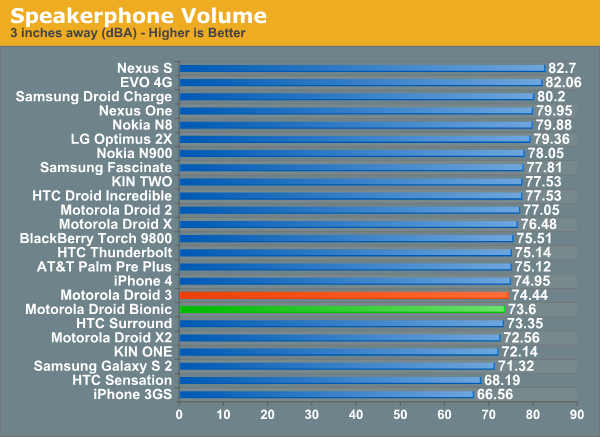


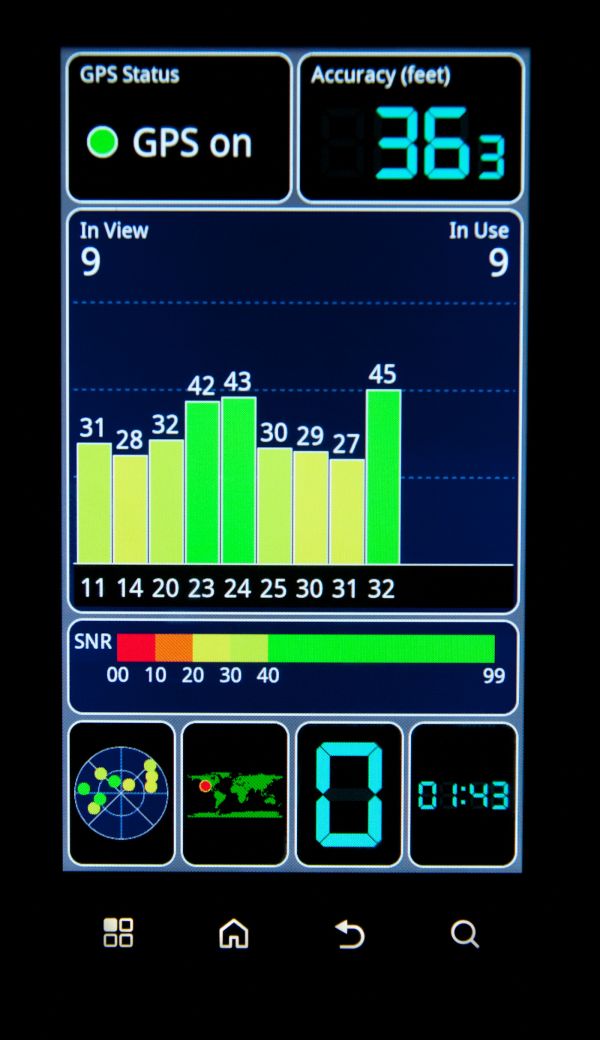








64 Comments
View All Comments
jonup - Tuesday, October 11, 2011 - link
It's actually leads to factual mistatement.On page 2 bellow the browsing battary life graph "2.236" should be "3.236".
Take care!
Brian Klug - Tuesday, October 11, 2011 - link
Very good catch, fixed! Thanks!-Brian
Someguyperson - Tuesday, October 11, 2011 - link
"There’s a grille to the side of this which serves no real purpose that I can tell other than decoration."- If I do recall, that's for the speakerphone.
"I went ahead and measured with a DMM just to make sure, though you can simply just look at the battery information page in ##4636## and see the same voltage at fully charged."
- You're thinking of *#*#4636#*#*
Someguyperson - Tuesday, October 11, 2011 - link
Forget the speaker comment. You didn't mention the obviously placed speakerphone and I thought you were talking about that.I do believe you can lock a handset into a specific mode of operation through the *#*#4636#*#* operation if you want pure LTE testing though. It's under the "Phone information" menu at the bottom. In my experience, you can even try to lock the handset into modes it doesn't have.
Brian Klug - Tuesday, October 11, 2011 - link
I'm actually referring to another menu in the case of the Bionic. Using the *#*#4636#*#* menu here doesn't work if the RIL isn't setup properly, as is what seems to be the case here. (EG the only options are the defaults, GSM/CDMA Auto (PRL) is selected by default, and there are no references to LTE at all).There's another menu inside ##PROGRAM (then enter SPC 000000), Test mode, keep going next page until you arrive at a page with many drop down options, select Network mode: "LTE only" like so:
http://imgur.com/a/C8noI
Unfortunately, if you do that, you lose 1x voice, so be careful.
-Brian
sotoa - Tuesday, October 11, 2011 - link
Thanks for the review. I couldn't wait for the Bionic (due to delays), but I'm really happy with my Droid 3 and glad that these are very similar. No loss for me there!I'm bummed about the audio issues though. Music is just not loud weather using the headphones or the speaker. The original Droid was so much louder.
rscoot - Tuesday, October 11, 2011 - link
http://images.anandtech.com/doci/4910/Bionic-About...This picture shows the number for the handset, you might want to edit that out!
Brian Klug - Tuesday, October 11, 2011 - link
Well, at least for the demo phone that will be sent back, haha ;)Thanks for pointing that out though.
-Brian
Aikouka - Tuesday, October 11, 2011 - link
One thing that's been on my mind in regard to LTE power draw is whether or not there's a parallel that can be made to CPUs. Similar to how they say a faster CPU that draws slightly more power will finish a task faster, is it possible to state that a LTE-equipped phone will finish loading web content significantly faster (not hard task compared to Verizon's EVDO), and it can return to a low-powered state? I know on my normal 3G (GSM) connection, if I'm watching a video on YouTube, it's going to be sitting there continuously loading for at least a minute, and the battery life definitely takes a hit for constantly accessing the modem.rrhartjr - Tuesday, October 11, 2011 - link
You know.. I don't think I've ever seen anyone make this point.. and I think it's pretty prescient.The converse is that since it loads faster.. you'll just consume more, faster..
How many times have you given up waiting on something over EVDO and going to do something else. With LTE, the end of waiting!